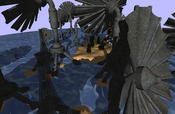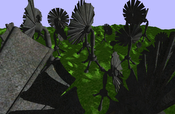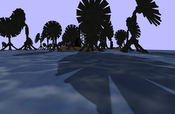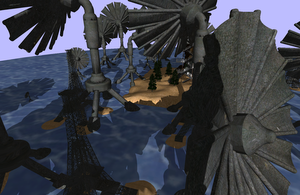Information
- Publication Type: Conference Paper
- Workgroup(s)/Project(s):
- Date: June 2007
- ISBN: 978-3-905673-52-4
- Publisher: Eurographics Association
- Organization: Eurographics
- Location: Grenoble, France
- Lecturer: Daniel Scherzer
- Editor: Jan Kautz and Sumanta Pattanaik
- Booktitle: Rendering Techniques 2007 (Proceedings Eurographics Symposium on Rendering)
- Conference date: 25. June 2007 – 27. June 2007
- Pages: 45 – 50
- Keywords: shadow mapping
Abstract
Shadow mapping suffers from spatial aliasing (visible as blocky shadows) as well as temporal aliasing (visible as flickering). Several methods have already been proposed for reducing such artifacts, but so far none is able to provide satisfying results in real time.This paper extends shadow mapping by reusing information of previously rasterized images, stored efficiently in a so-called history buffer. This buffer is updated in every frame and then used for the shadow calculation. In combination with a special confidence-based method for the history buffer update (based on the current shadow map), temporal and spatial aliasing can be completely removed. The algorithm converges in about 10 to 60 frames and during convergence, shadow borders are sharpened over time. Consequently, in case of real-time frame rates, the temporal shadow adaption is practically imperceptible. The method is simple to implement and is as fast as uniform shadow mapping, incurring only the minor speed hit of the history buffer update. It works together with advanced filtering methods like percentage closer filtering and more advanced shadow mapping techniques like perspective or light space perspective shadow maps.
Additional Files and Images
Additional images and videos
 image1:
Pixel-correct shadow maps as a result of using a shadow map (size 10242) with shadow test confidence together with a history buffer. Note that projection and perspective aliasing are completely removed.
image1:
Pixel-correct shadow maps as a result of using a shadow map (size 10242) with shadow test confidence together with a history buffer. Note that projection and perspective aliasing are completely removed.
 image2:
In this figure we used our new shadow mapping technique (PCSM) toshow that even scenarios were projection aliasing is the dominant source of error, we can produce the correct shadowing solution.
image2:
In this figure we used our new shadow mapping technique (PCSM) toshow that even scenarios were projection aliasing is the dominant source of error, we can produce the correct shadowing solution.
 image3:
In this figure we used our new shadow mapping technique (PCSM) toshow that even scenarios were projection aliasing is the dominant source of error, we can produce the correct shadowing solution.
image3:
In this figure we used our new shadow mapping technique (PCSM) toshow that even scenarios were projection aliasing is the dominant source of error, we can produce the correct shadowing solution.
 image4:
New fragments (shown in red) without history that result from a camera translation.
image4:
New fragments (shown in red) without history that result from a camera translation.
Additional files
Weblinks
No further information available.BibTeX
@inproceedings{Scherzer-2007-PCS,
title = "Pixel-Correct Shadow Maps with Temporal Reprojection and
Shadow Test Confidence",
author = "Daniel Scherzer and Stefan Jeschke and Michael Wimmer",
year = "2007",
abstract = "Shadow mapping suffers from spatial aliasing (visible as
blocky shadows) as well as temporal aliasing (visible as
flickering). Several methods have already been proposed for
reducing such artifacts, but so far none is able to provide
satisfying results in real time. This paper extends shadow
mapping by reusing information of previously rasterized
images, stored efficiently in a so-called history buffer.
This buffer is updated in every frame and then used for the
shadow calculation. In combination with a special
confidence-based method for the history buffer update (based
on the current shadow map), temporal and spatial aliasing
can be completely removed. The algorithm converges in about
10 to 60 frames and during convergence, shadow borders are
sharpened over time. Consequently, in case of real-time
frame rates, the temporal shadow adaption is practically
imperceptible. The method is simple to implement and is as
fast as uniform shadow mapping, incurring only the minor
speed hit of the history buffer update. It works together
with advanced filtering methods like percentage closer
filtering and more advanced shadow mapping techniques like
perspective or light space perspective shadow maps.",
month = jun,
isbn = "978-3-905673-52-4",
publisher = "Eurographics Association",
organization = "Eurographics",
location = "Grenoble, France",
editor = "Jan Kautz and Sumanta Pattanaik",
booktitle = "Rendering Techniques 2007 (Proceedings Eurographics
Symposium on Rendering)",
pages = "45--50",
keywords = "shadow mapping",
URL = "https://www.cg.tuwien.ac.at/research/publications/2007/Scherzer-2007-PCS/",
}


 Preprint
Preprint